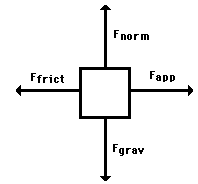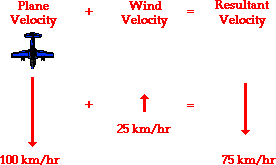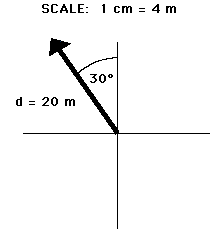Today in class, we learned about adding non-collinear vectors without using Scale Diagrams (or without using the "tail-to-tip" method).
You can add them together and find the Resultant Vector by using the Pythagorean Theorem and Trig Ratios. You can only use this if the two non-collinear vectors you are adding forms a right triangle. The formulas you can use for this are:
Ex.) 92 m/s [W] + 115 m/s [S]
Solution:
Use the formula AR^2 = Ax^2 + Ay^2 to find AR.
AR^2 = (92 m/s [W])^2 + (115 m/s [S])^2
= 8464 + 13225
= 21 689 (take the square root)
AR = 147m/s
After finding AR, use the Trig Ratio formula to find pheta.
we find that pheta = 51.3 degrees
The final answer is 147 m/s [W 51degrees S]
We also talked about multiplying a vector by a scalar. The units of both the vector and scalar quantities have to be multiplied and both units from each quantity becomes the unit in the product of the final answer.
Before the class ended, we also started talkig about Vector Resolution. If you have two vectors that are not perpendicular (or does not form a right triangle), you can still add them algebraically by separating or breaking down the vectors into their own x and y components. After doing that, you need to use the trig ratio formulas. We only did one example in class because we didn't have much time left. That is everything.
Kenzie is next.





.jpg)







